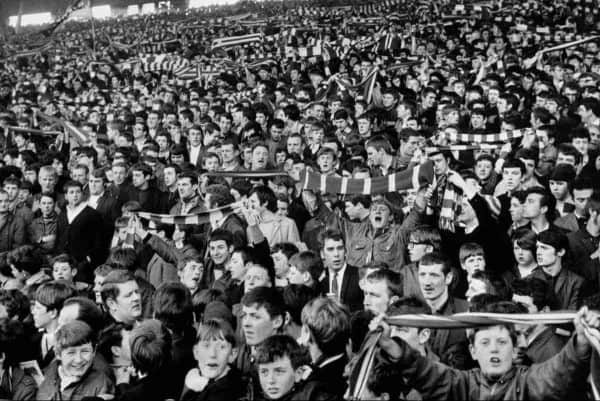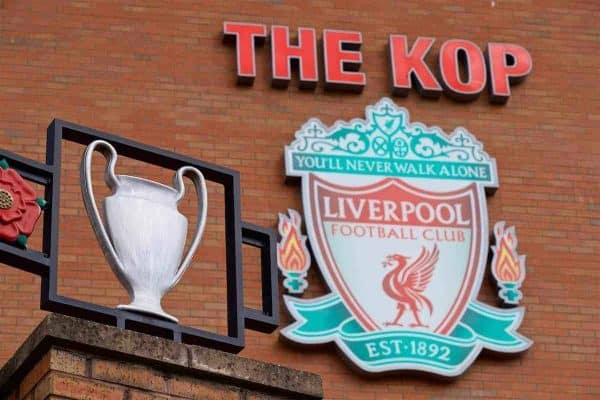In 1900, on a far-flung battlefield in South Africa, the Boer war was raging. The British army was attempting to capture a strategic hilltop called Spion Kop and 300 men died trying. Many were from Liverpool.
Meanwhile, back home Liverpool Football Club were on their way to winning their very first league title. The club were also busy constructing a new stand along Kemlyn Road.
Then in 1906, after Liverpool’s second league title was secured they turned their attention to the heap of rubble on Walton Breck Road. Little did they know, but they were about to give birth to something quite magical.
As a reward for the loyalty of supporters, who had stood at that end of the ground since 1892, the owners decided to erect a new stand made of cinder and brick.
The sports editor of the Liverpool Daily Post and Echo, Ernest Edwards, gazed upon the magnificent pile and immediately christened it the Spion Kop, after the famous hill were so many Scousers had perished years before.
In that moment a legend was born. Sure other football grounds have stands they call a Kop end, but Anfield’s is the original and by far the best. It is also easily the most famous terrace in all of football.
The first game to take place in front of the mighty stand, was a League opener against Stoke City.
According to the local press, the city of Liverpool was sweltering under record temperatures. Shock was expressed at the fact the game wasn’t postponed, but the heat didn’t deter the first ever Kopites from turning out in their droves.
With no roof above their heads, they’d have been exposed to the burning sun and packed together they’d have struggled with the unbearable heat. The Liverpool Echo gives a sense of the conditions, with a headline that declared:
LIVERPOOL
V
STOKE
_________
LEAGUE DIVISION 1
__________
TROPICAL HEAT
__________
HEWITT SCORES FIRST GOAL
FOR LIVERPOOL
___________
CROWD ESTIMATED AT 30,000
Liverpool won 1-0, thanks to a 20th minute goal scored by Joe Hewitt, the first player to score in the shadow of the Kop. The match report states that 25,000 supporters were packed into the ground at kick-off. However, they continued to pour in during the game and by half-time there were 30,000 in attendance.
This was 10,000 more than the the previous season and many of those supporters were crammed into the new stand. It must have been a fearsome sight.
The numbers climbing onto the Kop ebbed and receded as the season unfolded, but on the 29th September 1906, 40,000 crammed into the stadium to see Liverpool take on Everton. Sadly, despite going a goal up in the first-half through Jack Parkinson, Everton‘s Sandy Young hit two in the second half to take the spoils.
The ground remained unchanged until 1928, when the Kop got a makeover. It was now a terrifying sight for any opposition and the largest single bank of terrace anywhere in football. It was capable of holding 30,000 people all standing, more than some grounds could hold in their entirety. The club also erected a roof over it, providing protection from the elements.
To those used to the old stand, this must have seemed like luxury. The noise, amplified under that tin roof, must have been incredible.

In the 1960s and ’70s the Kop would reach new heights, in terms of its majesty and power, when it would terrify opponents and inspire new generations of Liverpool players to glory.
In all the years since that famous old terrace has inspired awe and wonderment. It has been celebrated for its colour and song, for its wit and invention and for its fierce loyalty.
For many of us, blessed to be able to call it home on a match day, it is, without doubt, the greatest place in football. Long may it reign.
















Fan Comments